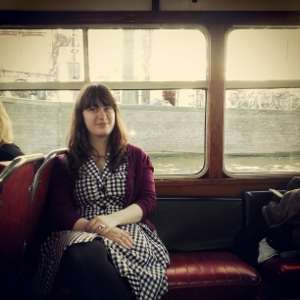Stravinsky’s Scherzo Fantastique, Op. 3 is one of his earliest works, as its opus number would suggest. There are very few composers who can truly create a fairytale atmosphere in their music, but Stravinsky was one of the best at it. In a way it is obvious that the Scherzo Fantastique is an early work – it doesn’t yet have the strong melodies, off-beat rhythms and idiosyncrasies of his later works, but it’s definitely worth listening to. There is something about it that made me smile throughout the entire performance: it is such lively music, and makes you imagine pictures and even movie scenarios. The piece has an absolutely wonderful colour to its orchestration, and the combination of the piccolo and celesta is particularly effective.
But the true star of the evening was Dmitri Shostakovich. The Rotterdam Philharmonic performed two of his works: the Cello Concerto no. 1 and the Symphony no. 10. Both written after Stalin’s death, they were some of the earliest works by Shostakovich to contain his DSCH (D, E flat, C, B) motif. The concerto was written for the famous cellist Mstislav Rostropovich, who was a student of Shostakovich’s and later became a close friend. As opposed to second cello concerto, this one is rather upbeat and seemingly light-hearted. In many Shostakovich works there is a double layer, and lightheartedness seldom seems genuine, but I think this concerto is something of an exception (perhaps like the Piano Concerto no. 1).
Symphony no. 10 in E minor is a work I have listened to countless times, and its impact never lessens. First performed in 1953, it was quickly heralded as one of Shostakovich’s greatest achievements, and it really is an incredible work. It is not a happy piece (despite the energetic second movement), though a certain sense of triumph is almost tangible in the music.
Live performances of this symphony will always remain interesting because there is a lot of room for interpretation, especially in tempo, but also in the solo parts musicians play. Tonight this was shown above all by first clarinetist Julien Hervé, who played the (many) solo clarinet parts so incredibly beautifully, I had no idea they could sound like that. Conductor Roth kept the pace up – the second movement seemed almost too fast for the woodwinds! – but this worked very well, and only added to the excitement. The Tenth Symphony consists of four movements, and the fourth (Andante – Allegro) was the definite highlight of the evening. The orchestra danced and swayed until after around ten minutes the brass belted out the DSCH theme. The remaining build-up was superbly compelling and the last chords rang out as they should: final, hopeful, powerful and above all entrancing.


